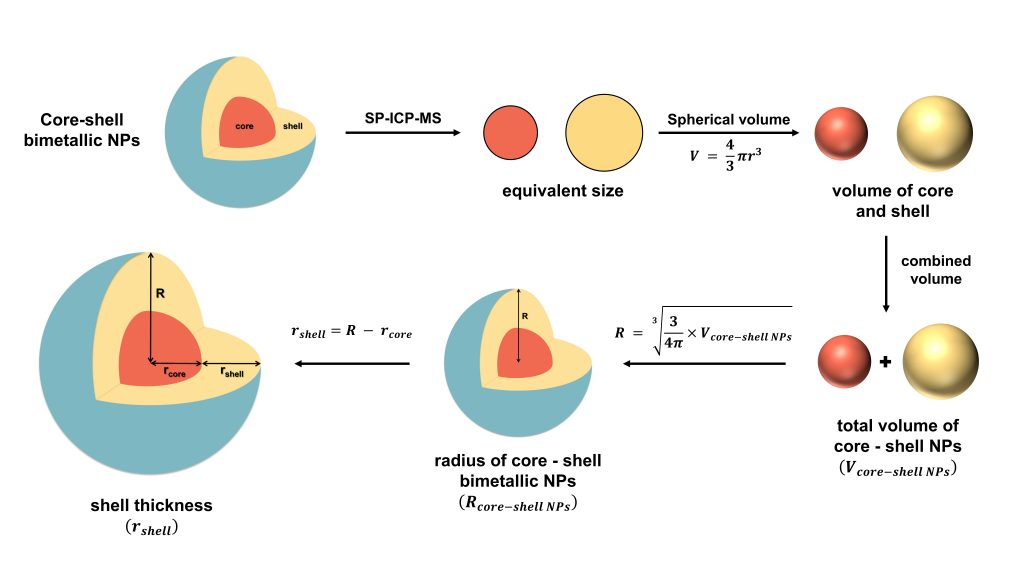Nareerat Heetpat, Jitapa Sumranjit, and Atitaya Siripinyanond*
Single particle inductively coupled plasma mass spectrometry (SP-ICP-MS) was exploited to estimate the core and shell thickness of bimetallic nanoparticles, as well as the mass ratio of Au and Ag on the hollow AgAu nanoparticles. Provided that the shape of the bimetallic particles is known, the equivalent spherical size information from SP-ICP-MS can also be used to estimate the size of nanoparticles with other aspherical morphologies. Although it is still necessary to use TEM for providing the information on the morphology of the particles, SP-ICP-MS offers an advantage of being a very sensitive technique capable of detecting very low particle concentration within short analysis time of less than 5 min for one sample. For bimetallic alloy nanoparticles, SP-ICP-MS was used in combination with FlFFF to provide information on the changes of particle size under various synthesis conditions. The information on hydrodynamic diameter from FlFFF and the size from SP-ICP-MS were combinedly used to understand particle transformation during the synthesis of bimetallic nanoparticles. Using the size and particle concentration information from SP-ICP-MS after particles separation by FlFFF, the information on mass concentration of two metals on the bimetallic nanoparticles can be estimated.
Thanks are due to the National Research Council of Thailand (NRCT) and Mahidol University under grant number N41A640159. The support from Center of Excellence for Innovation in Chemistry (PERCH-CIC) and the scholarship support given to NH from the National Science and Technology Development Agency (NSTDA) according to the Thailand Graduate Institute of Science and Technology (TGIST) scholarship agreement TG–NN–MU-62-045 M are gratefully acknowledged. This work is related to the SDGs 4 (Quality Education).

Reference: Heetpat, N., Sumranjit, J., Siripinyanond, A. Use of single particle inductively coupled plasma mass spectrometry for understanding the formation of bimetallic nanoparticles (2022) Talanta, 236, art. no. 122871, . DOI: 10.1016/j.talanta.2021.122871
